Feeling the heat drain your energy? Intense temperatures can be more than uncomfortable; they can be risky. A cooling vest might be your simple solution to stay cool.
To properly use a cooling vest, activate it by soaking in water or freezing inserts, as per its type. Wear it over a light clothing layer, adjusting for a snug fit. Re-activate as needed.
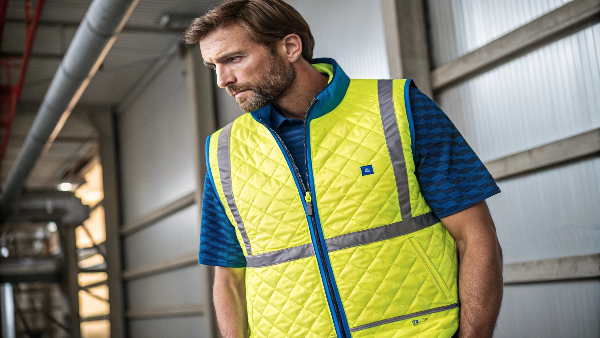
Staying cool in scorching weather is a big deal for me, especially when I'm out and about or working on demanding projects. I remember one summer job where the heat was almost unbearable, and that's when I first learned about cooling vests. It made such a difference! If you're wondering how to get the most out of these clever garments, or if they're even right for you, you've come to the right place. We're going to explore how to use them, if they really work, and a lot more. Let's dive in and find out how these vests can help you keep your cool.
How do you use a cooling vest?
Unsure how to start with your cooling vest? Using it wrong means you won't feel the full cooling benefit. But don't worry, it's usually quite straightforward to get going.
Typically, you activate a cooling vest by soaking it in water or inserting pre-chilled packs. Then, wear it snugly over a thin shirt and re-activate when the cooling effect fades.
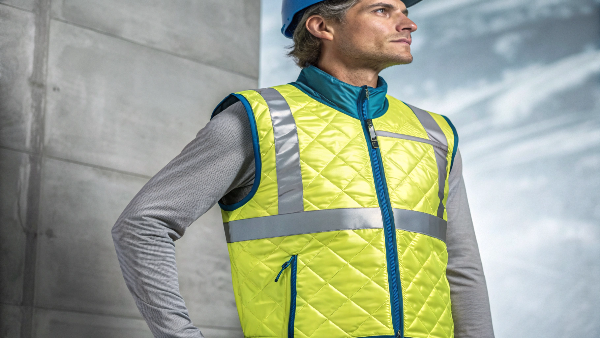
Using a cooling vest correctly is key to getting that refreshing relief. I learned this firsthand when I first got one. I just threw it on without really reading the instructions and wondered why it wasn't as effective as I hoped. Once I figured out the proper steps, it was a game-changer.
Most cooling vests fall into a few categories for activation:
- Evaporative Vests1: These are usually soaked in water for a few minutes. You then gently wring out the excess water. The cooling happens as the water evaporates from the vest's fabric.
- Ice Pack Vests2: These have pockets for frozen gel packs or ice packs. You'll need to freeze these packs for a few hours before use.
- Phase Change Material (PCM) Vests3: These contain special packs that are "charged" by placing them in ice water, a refrigerator, or sometimes a freezer, depending on their specific melting point.
Here's a simple breakdown of how to use most types:
| Step | Action | Why it's important |
|---|---|---|
| 1. Activate | Soak in water, or insert frozen/chilled packs, per instructions. | This "powers up" the cooling mechanism of the vest. |
| 2. Prepare | Wear a thin, breathable layer of clothing underneath. | Protects skin, aids comfort, can absorb minor dampness. |
| 3. Wear | Put on the vest and adjust straps for a snug but comfortable fit. | Ensures good contact for effective cooling transfer. |
| 4. Re-activate | Re-soak or swap packs when cooling diminishes. | Maintains the cooling effect over extended periods. |
At Vissafetywear, we manufacture various types of cooling vests, and we always emphasize following the specific instructions that come with each model, as activation methods can vary slightly.
Do cooling vests really work?
Skeptical if a cooling vest is just hype? Wasting money on something that doesn't deliver is frustrating. The good news is, yes, they generally do work effectively for many.
Cooling vests work by absorbing body heat or using evaporation to lower your skin temperature. Different types achieve this through ice, special gels, or water evaporation, providing noticeable cooling.
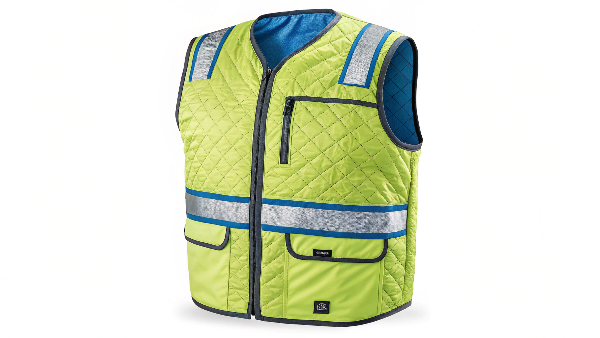
I often get asked if these vests are genuinely effective. From my experience, and from what I hear from customers, they absolutely can be. Think about how a cool breeze feels on a hot day, or how refreshing a cold drink is. Cooling vests work on similar principles but apply that cooling directly to your body's core. The science is pretty straightforward. They either use the principle of evaporative cooling (like when sweat evaporates from your skin) or conductive cooling (transferring heat away from your body to a cooler source, like ice packs or phase change materials).
Different types have different strengths:
- Evaporative vests are great in low to moderate humidity. The drier the air, the better they work.
- Ice pack vests provide intense cooling but can be heavy and the cooling effect might not last as long before needing new packs.
- Phase Change Material (PCM) vests offer a consistent temperature for a longer period and can be "recharged" relatively quickly. They are often a good balance.
I remember working on a project in a poorly ventilated workshop one summer. My Vissafety cooling vest was a lifesaver. It didn't make the room cooler, but it made me feel significantly more comfortable and able to focus. They don't magically make the heat disappear, but they make it much more manageable by directly cooling your body.
Do cooling vests make you wet?
Worried about feeling damp while trying to stay cool? No one wants to trade one discomfort for another. Whether a cooling vest makes you wet depends on the type.
Evaporative cooling vests can make your underlying shirt damp, especially in high humidity. Ice pack or phase change vests usually don't, if used with a proper barrier layer.
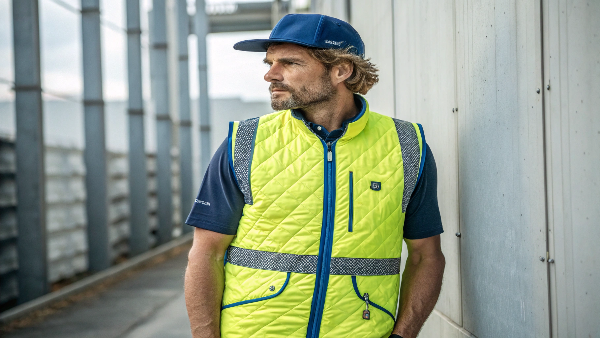
This is a common concern, and it's a valid one. The answer really depends on the specific type of cooling vest you're using. I've tried a few different kinds over the years.
With evaporative cooling vests, since they work by water evaporating from the fabric, there's a good chance your shirt underneath will get damp, or even wet. This is especially true if you're in a very humid environment where evaporation is slower, or if you've over-soaked the vest. For me, in dry heat, the slight dampness is a small price to pay for the cooling effect, but in humidity, it can feel a bit clammy.
On the other hand, ice pack vests or phase change material (PCM) vests are generally designed to keep you dry. The cooling elements are contained within sealed packs, and you typically wear these vests over a light layer of clothing. As long as the packs aren't leaking and you have that barrier layer, you should stay dry. Condensation can sometimes be an issue with very cold packs, but a good vest design and an undershirt usually manage this well. At Vissafetywear, when we design our cooling vests, we pay close attention to how moisture is managed, aiming for maximum cooling with minimal dampness.
Do dog cooling vests actually work?
Concerned about your furry friend overheating in the summer? Pets can suffer from heatstroke too. The good news is, yes, dog cooling vests can help keep them comfortable.
Dog cooling vests work similarly to human ones, using evaporative cooling or cold packs to help lower a dog's body temperature and reduce the risk of overheating in hot weather.
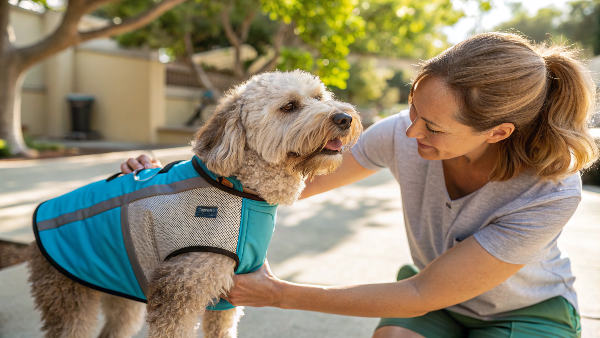
While my company, Vissafetywear, specializes in high-visibility and cooling apparel for humans, I'm a dog owner myself, and I've looked into this. Our furry companions can't tell us when they're too hot, so it's up to us to protect them. Dog cooling vests apply the same core principles as the ones we wear. Most dog vests are evaporative – you soak them in water, wring them out, and the evaporation process helps draw heat away from the dog's body. Some might have pockets for gel packs, similar to human ice pack vests.
Key things to consider for dog cooling vests:
- Fit: It needs to be snug enough to make contact but not restrictive.
- Coverage: Vests that cover more of the dog's chest and back will generally be more effective.
- Material: Lightweight, non-toxic materials are essential.
- Supervision: Never leave a dog unattended for long periods in a cooling vest, especially in extreme heat. They are an aid, not a complete solution.
- Dog's Breed: Dogs with thick coats or brachycephalic (short-nosed) breeds are more prone to overheating and might benefit more.
I remember taking my Golden Retriever on a hike one warm day. He started panting heavily, and I really wished I had a cooling vest for him then. While they aren't a substitute for shade, water, and avoiding the hottest parts of the day, they can definitely be a valuable tool for responsible pet owners.
What are the disadvantages of a cooling vest?
Thinking a cooling vest is a perfect solution? While great, they have limitations. Knowing these helps you choose wisely and manage expectations for staying cool and comfortable.
Disadvantages can include limited cooling duration, added weight or bulk, potential for skin irritation if not used properly, and the need for re-activation or maintenance of packs.

Cooling vests are fantastic tools, but they aren't without their downsides. I believe in being realistic, and it's important to know what to expect. From my experience and what I've learned in the industry with Vissafetywear, here are some common drawbacks:
| Disadvantage | Description | My Experience / Mitigation |
|---|---|---|
| Limited Duration | The cooling effect doesn't last forever. Evaporative vests dry out; ice packs melt; PCMs warm up. | I always carry extra water to re-soak my evaporative vest or have spare frozen packs ready if I need extended cooling. |
| Weight & Bulk | Some vests, especially ice pack types, can be heavy or bulky, which might restrict movement slightly. | Lighter PCM or evaporative vests are better if mobility is key. I choose based on the activity. |
| Can Feel Damp | Evaporative vests, by nature, can make your underlying clothes damp. | Wearing a thin, quick-drying layer underneath helps. Not ideal for high humidity. |
| Re-activation Needs | You need access to water (for evaporative) or a freezer/cooler (for ice/PCM packs) to "recharge" them. | This requires some planning, especially if you're out for a long time or in a remote location. |
| Skin Sensitivity | Very cold packs directly on skin can be uncomfortable or even cause cold burns. | Always wear a layer between the vest and your skin, especially with ice or very cold PCM packs. |
| Effectiveness Varies | Performance can depend on humidity (for evaporative) or ambient temperature. | Understanding which vest type suits your environment is crucial. Evaporative is less effective in swampy Florida summers. |
Despite these points, for many people, myself included, the benefits of reduced heat stress and increased comfort far outweigh these disadvantages, especially in demanding work environments or during intense outdoor activities.
Can you put a cooling vest in the freezer?
Wondering if you can supercharge your vest in the freezer? Trying to get it extra cold might seem smart, but it could damage some types or make it too cold to wear.
Some cooling vests, specifically those with ice gel packs or certain phase change materials, are designed to be put in the freezer. Evaporative vests should not be frozen.

This is a question I get quite often, and it's crucial to get it right to avoid damaging your vest or causing discomfort. Whether you can put a cooling vest in the freezer depends entirely on its type.
- Ice Pack Vests: Yes, absolutely. The gel packs or ice packs these vests use are meant to be frozen. That's how they provide their cooling effect. I always keep a spare set of packs for my ice vest in the freezer.
- Phase Change Material (PCM) Vests: Some PCM packs can be put in the freezer, while others are designed to be chilled in a refrigerator or ice water. It depends on the specific "melting" or activation temperature of the material. Always check the manufacturer's instructions. Freezing a PCM designed for refrigeration might make it too rigid or too cold.
- Evaporative Vests: No, you generally should not put an evaporative cooling vest in the freezer. These vests work by the evaporation of water from their fabric. Freezing the water solid within the fabric can damage the material's fibers and structure. Plus, a frozen, solid vest would be incredibly stiff and uncomfortable to wear, and it wouldn't provide evaporative cooling until it thawed.
I once tried to "boost" an old evaporative vest by putting it in the freezer briefly. It just became stiff and didn't really improve the cooling. The key is to use each vest as intended. For our Vissafetywear cooling vests, we provide clear instructions on how to activate and care for each type to ensure optimal performance and longevity.
Who uses cooling vests?
Curious about who actually benefits from these vests? Wondering if they're just for extreme athletes or specific jobs? You might be surprised by how many people use them.
Cooling vests are used by construction workers, athletes, factory personnel, people with heat sensitivity (like MS), military, and anyone working or playing in hot conditions to improve comfort and safety.

Cooling vests aren't just a niche product; they serve a wide range of people across various activities and professions. At Vissafetywear, we see demand from many sectors. I've personally seen them make a huge difference for:
- Industrial and Construction Workers: People working outdoors in direct sun or in hot indoor environments like foundries or factories. This is a core group for us, as safety and productivity are key.
- Athletes and Fitness Enthusiasts: For training and competition in warm weather, or for pre-cooling before an event and post-cooling for recovery.
- Military and Emergency Services: Personnel operating in hot climates or wearing heavy gear benefit greatly.
- Individuals with Medical Conditions: People with Multiple Sclerosis (MS), POTS, or other conditions causing heat intolerance find them essential for daily life. I have a friend with MS, and she says her cooling vest gives her back her summers.
- Outdoor Hobbyists: Gardeners, hikers, festival-goers, motorcyclists – anyone spending extended time in the heat.
- Theme Park Workers or Mascots: Wearing heavy costumes in the heat can be brutal, and cooling vests are a game-changer.
Essentially, anyone who needs to perform, work, or simply exist more comfortably and safely in hot conditions can benefit. The goal is to reduce core body temperature, lessen the risk of heat stress, and improve overall well-being and performance. It's about making heat more manageable, no matter what you're doing.
Does a wet towel around your neck keep you cool?
Looking for a quick, low-tech cooling fix? Wondering if that old trick of a wet towel4 actually works? Yes, it can offer some temporary relief through evaporation.
A wet towel around your neck can provide a temporary cooling sensation5 as the water evaporates, drawing heat away from your skin. However, its effect is often short-lived.
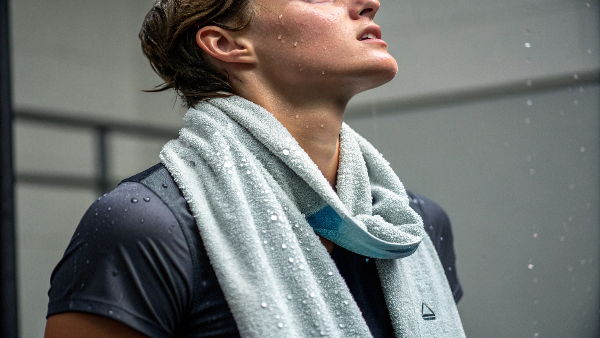
The wet towel trick is a classic for a reason – it does offer some cooling! I've definitely resorted to it many times before I got into using proper cooling vests. The science is the same as an evaporative cooling vest6, just on a much smaller and simpler scale. When water evaporates, it changes from a liquid to a gas, and this process requires energy (heat), which it draws from the surface it's on – in this case, your skin and the blood vessels near the surface of your neck.
Here's a quick comparison to a dedicated cooling vest:
| Feature | Wet Towel | Cooling Vest (Evaporative) |
|---|---|---|
| Cooling Area | Small (neck only) | Larger (torso) |
| Duration | Short (dries quickly) | Longer (holds more water) |
| Convenience | Easy to wet, but needs frequent re-wetting | May need soaking, but lasts longer |
| Effectiveness | Mild, localized cooling | More significant, core body cooling |
| Hands-Free | Can slip off, might need holding | Securely worn |
So, while a wet towel provides immediate, albeit temporary, relief and is super accessible, it’s not as effective or long-lasting as a purpose-built cooling vest. Think of it as a quick fix versus a more sustained solution. For a little bit of comfort on a mildly warm day, a wet towel can be nice. But for serious heat or prolonged exposure, I'd always opt for a proper cooling vest to cover a larger area and maintain the cooling effect for longer.
Is it better to wear a vest in hot weather?
Debating your hot weather wardrobe? Adding a layer might seem counterintuitive. But a cooling vest isn't just any vest; it's designed to actively fight the heat.
Yes, wearing a cooling vest in hot weather is generally better than not, as it actively works to lower your body temperature, unlike a regular vest which might trap heat.
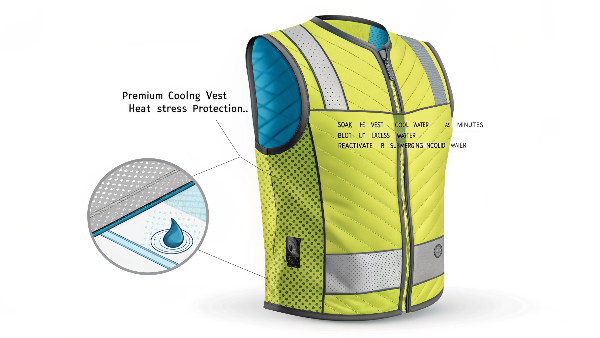
This is a great question because, usually, adding layers in hot weather is a recipe for overheating! But a cooling vest is a different beast altogether. A standard fabric vest, like a fashion item or even some regular work vests, can indeed trap body heat and make you feel hotter. I've made that mistake before, thinking an extra layer would offer sun protection, only to end up sweltering.
However, a cooling vest is specifically engineered to do the opposite.
- Evaporative vests use the power of evaporation to draw heat away from your body.
- Ice pack and PCM vests use chilled elements to directly absorb your body heat.
Instead of insulating you, they actively work to reduce your skin and core temperature. This can lead to:
- Increased comfort: Feeling cooler makes a huge difference to your overall well-being.
- Improved performance: Whether you're working or playing, you're likely to be more focused and productive if you're not battling heat stress.
- Enhanced safety: Reducing the risk of heat exhaustion or heat stroke is a major benefit, especially for those in physically demanding roles or with health sensitivities.
At Vissafetywear, our focus is on providing apparel that enhances safety and comfort. A cooling vest is a prime example of a garment that, while being a "vest," serves to make hot conditions much more tolerable and safer, rather than adding to the heat burden. So, when it's hot, a cooling vest is definitely a smart choice.
Conclusion
Properly using a cooling vest involves correct activation and wear. They truly work, offering significant relief from heat, making them a valuable tool for many in hot conditions.
-
Explore the advantages of Evaporative Vests to understand how they can provide effective cooling relief during hot weather. ↩
-
Learn how Ice Pack Vests function and their effectiveness in providing cooling relief, especially in extreme heat. ↩
-
Discover the technology behind PCM Vests and how they can enhance your cooling experience in various conditions. ↩
-
Explore this link to understand the science behind using a wet towel for cooling and its effectiveness compared to other methods. ↩
-
Discover the science behind the cooling sensation from a wet towel and why it works for temporary relief from heat. ↩
-
Learn about evaporative cooling vests, their benefits, and how they compare to simple methods like wet towels for effective cooling. ↩



